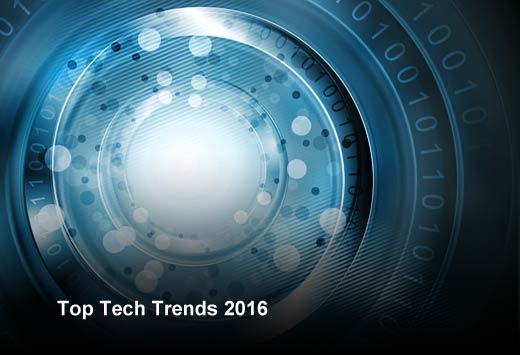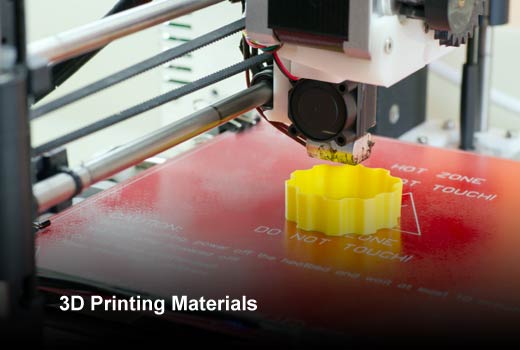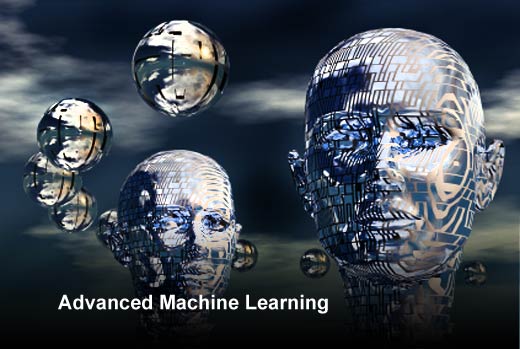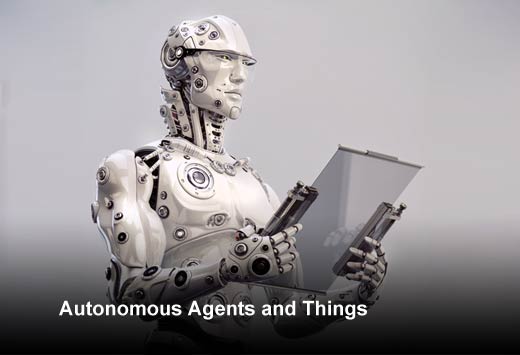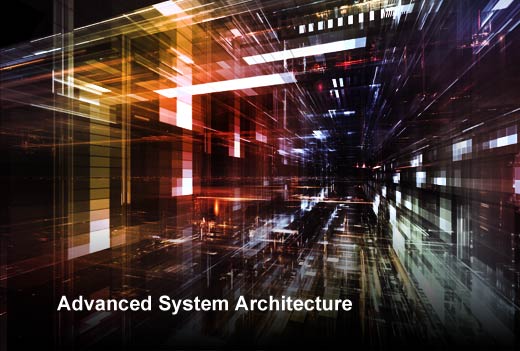Be sure to check out the Top 10 Strategic Technology Trends for 2017.
Technology is constantly evolving and maturing. It moves from a nascent, undefined entity to one that is widely accepted and becomes so commonplace that we wonder how we ever functioned without it. Mobile and cloud are two prominent examples of such a journey. From businesses to individual consumers, everyone is connected to everyone, everywhere, all the time.
Newer technologies such as smart devices, IoT, software-defined everything and 3D printing are also making headway in their mainstream adoption. So much so that recently, two students from a British Columbia school used a classroom 3D printer to create a mini wheelchair for a formerly feral kitten who lost it legs shortly after birth. The possibilities for where these technologies will take us and how they can impact our lives are endless.
Gartner recently released its list of the top 10 strategic technology trends for 2016. Gartner defines these trends as those with the potential for having a significant impact on the organization. Factors that denote significant impact include a high potential for disruption to the business, end users or IT; the need for a major investment; or the risk of being late to adopt.
“Gartner’s top 10 strategic technology trends will shape digital business opportunities through 2020,” said David Cearley, vice president and Gartner Fellow.
Here are the top 10 strategic technology trends for 2016.
Top Tech Trends 2016
Click through for the top 10 strategic technology trends for 2016, as identified by Gartner.
Be sure to check out the Top 10 Strategic Technology Trends for 2017.
The Device Mesh
The device mesh refers to an expanding set of endpoints people use to access applications and information or interact with people, social communities, governments and businesses. The device mesh includes mobile devices, wearable, consumer and home electronic devices, automotive devices and environmental devices — such as sensors in the Internet of Things (IoT).
“In the post-mobile world the focus shifts to the mobile user who is surrounded by a mesh of devices extending well beyond traditional mobile devices,” said Mr. Cearley.
While devices are increasingly connected to back-end systems through various networks, they have often operated in isolation from one another. As the device mesh evolves, Gartner expects connection models to expand and greater cooperative interaction between devices to emerge.
Ambient User Experience
The device mesh creates the foundation for a new continuous and ambient user experience. Immersive environments delivering augmented and virtual reality hold significant potential but are only one aspect of the experience. The ambient user experience preserves continuity across boundaries of device mesh, time and space. The experience seamlessly flows across a shifting set of devices and interaction channels blending physical, virtual and electronic environment as the user moves from one place to another.
“Designing mobile apps remains an important strategic focus for the enterprise,” said Mr. Cearley. “However, the leading edge of that design is focused on providing an experience that flows across and exploits different devices, including IoT sensors, common objects such as automobiles, or even factories. Designing these advanced experiences will be a major differentiator for independent software vendors (ISVs) and enterprises alike by 2018.”
3D Printing Materials
Advances in 3D printing have already enabled 3D printing to use a wide range of materials, including advanced nickel alloys, carbon fiber, glass, conductive ink, electronics, pharmaceuticals and biological materials. These innovations are driving user demand, as the practical applications for 3D printers expand to more sectors, including aerospace, medical, automotive, energy and the military. The growing range of 3D-printable materials will drive a compound annual growth rate of 64.1 percent for enterprise 3D-printer shipments through 2019. These advances will necessitate a rethinking of assembly line and supply chain processes to exploit 3D printing.
“3D printing will see a steady expansion over the next 20 years of the materials that can be printed, improvement in the speed with which items can be printed and emergence of new models to print and assemble composite parts,” said Mr. Cearley.
Information of Everything
Everything in the digital mesh produces, uses and transmits information. This information goes beyond textual, audio and video information to include sensory and contextual information. Information of everything addresses this influx with strategies and technologies to link data from all these different data sources. Information has always existed everywhere but has often been isolated, incomplete, unavailable or unintelligible. Advances in semantic tools such as graph databases as well as other emerging data classification and information analysis techniques will bring meaning to the often chaotic deluge of information.
Advanced Machine Learning
In advanced machine learning, deep neural nets (DNNs) move beyond classic computing and information management to create systems that can autonomously learn to perceive the world, on their own. The explosion of data sources and complexity of information makes manual classification and analysis infeasible and uneconomic. DNNs automate these tasks and make it possible to address key challenges related to the information of everything trend.
DNNs (an advanced form of machine learning particularly applicable to large, complex datasets) are what make smart machines appear “intelligent.” DNNs enable hardware- or software-based machines to learn for themselves all the features in their environment, from the finest details to broad sweeping abstract classes of content. This area is evolving quickly, and organizations must assess how they can apply these technologies to gain competitive advantage.
Autonomous Agents and Things
Machine learning gives rise to a spectrum of smart machine implementations — including robots, autonomous vehicles, virtual personal assistants (VPAs) and smart advisors — that act in an autonomous (or at least semiautonomous) manner. While advances in physical smart machines such as robots get a great deal of attention, the software-based smart machines have a more near-term and broader impact. VPAs such as Google Now, Microsoft’s Cortana and Apple’s Siri are becoming smarter and are precursors to autonomous agents. The emerging notion of assistance feeds into the ambient user experience in which an autonomous agent becomes the main user interface. Instead of interacting with menus, forms and buttons on a smartphone, the user speaks to an app, which is really an intelligent agent.
“Over the next five years we will evolve to a post-app world with intelligent agents delivering dynamic and contextual actions and interfaces,” said Mr. Cearley. “IT leaders should explore how they can use autonomous things and agents to augment human activity and free people for work that only people can do. However, they must recognize that smart agents and things are a long-term phenomenon that will continually evolve and expand their uses for the next 20 years.”
Adaptive Security Architecture
The complexities of digital business and the algorithmic economy combined with an emerging “hacker industry” significantly increase the threat surface for an organization. Relying on perimeter defense and rule-based security is inadequate, especially as organizations exploit more cloud-based services and open APIs for customers and partners to integrate with their systems. IT leaders must focus on detecting and responding to threats, as well as more traditional blocking and other measures to prevent attacks. Application self-protection, as well as user and entity behavior analytics, will help fulfill the adaptive security architecture.
Advanced System Architecture
The digital mesh and smart machines require intense computing architecture demands to make them viable for organizations. Providing this required boost are high-powered and ultra-efficient neuromorphic architectures. Fueled by field-programmable gate arrays (FPGAs) as an underlining technology for neuromorphic architectures, there are significant gains to this architecture, such as being able to run at speeds of greater than a teraflop with high-energy efficiency.
“Systems built on GPUs and FPGAs will function more like human brains that are particularly suited to be applied to deep learning and other pattern-matching algorithms that smart machines use,” said Mr. Cearley. “FPGA-based architecture will allow further distribution of algorithms into smaller form factors, with considerably less electrical power in the device mesh, thus allowing advanced machine learning capabilities to be proliferated into the tiniest IoT endpoints, such as homes, cars, wristwatches and even human beings.”
Mesh App and Service Architecture
Monolithic, linear application designs (e.g., the three-tier architecture) are giving way to a more loosely coupled integrative approach: the apps and services architecture. Enabled by software-defined application services, this new approach enables web-scale performance, flexibility and agility. Microservice architecture is an emerging pattern for building distributed applications that support agile delivery and scalable deployment, both on-premises and in the cloud. Containers are emerging as a critical technology for enabling agile development and microservice architectures. Bringing mobile and IoT elements into the app and service architecture creates a comprehensive model to address back-end cloud scalability and front-end device mesh experiences. Application teams must create new modern architectures to deliver agile, flexible and dynamic cloud-based applications with agile, flexible and dynamic user experiences that span the digital mesh.
Internet of Things Platforms
IoT platforms complement the mesh app and service architecture. The management, security, integration and other technologies and standards of the IoT platform are the base set of capabilities for building, managing and securing elements in the IoT. IoT platforms constitute the work IT does behind the scenes from an architectural and a technology standpoint to make the IoT a reality. The IoT is an integral part of the digital mesh and ambient user experience and the emerging and dynamic world of IoT platforms is what makes them possible.
“Any enterprise embracing the IoT will need to develop an IoT platform strategy, but incomplete competing vendor approaches will make standardization difficult through 2018,” said Mr. Cearley.


